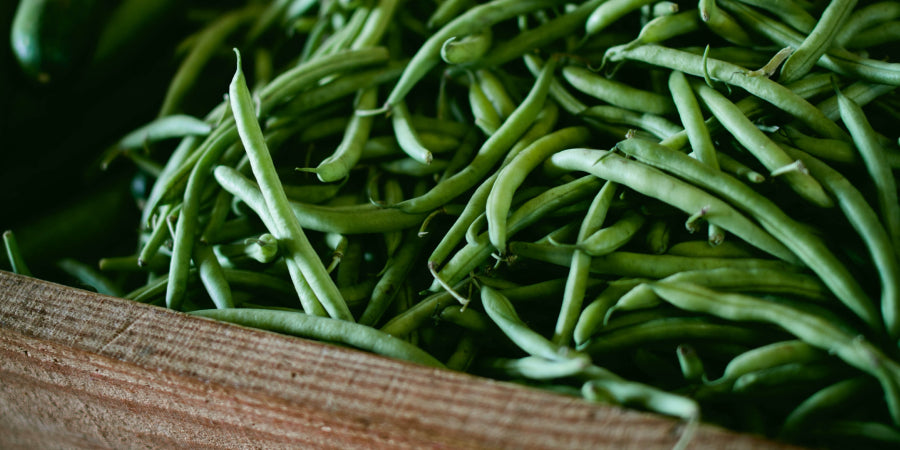Orders over $99

Stay Prepared and Nourished: Why You Need Freeze-Dried Green Beans in Your Family's Emergency Kit
Are you putting together an emergency preparedness kit for your family? Ensuring that you have the right supplies to keep your loved ones safe and nourished during unexpected situations is crucial. One item that deserves a special place in your emergency kit is freeze-dried green beans. These little green wonders not only offer a long shelf life but also provide essential nutrients and versatile options for meal preparation. In this article, we will explore why freeze-dried green beans are a smart choice for your family's emergency kit.
Why Freeze-Dried Green Beans?
Long Shelf Life for Extended Preparedness
When it comes to emergency preparedness, one of the key factors to consider is the shelf life of your food supplies. Freeze-dried green beans offer an impressive advantage in this regard. Due to the freeze-drying process, which removes moisture without compromising the nutritional value, these beans can stay edible for an extended period, often up to 25 years! Having freeze-dried green beans in your emergency kit ensures you have a reliable source of sustenance that will stand the test of time.
Nutritional Benefits for Optimal Health
During an emergency, it's vital to maintain a balanced diet to support your family's health and well-being. Freeze-dried green beans retain most of their nutrients, making them a valuable addition to your emergency kit. Packed with vitamins A, C, and K, as well as essential minerals like potassium and folate, these green beans offer a nutritional boost when fresh produce may be scarce. Including freeze-dried green beans in your emergency supplies helps ensure your family gets the vital nutrients they need to stay healthy.
Versatility for Varied Meal Options
In times of crisis, having versatile food options can make a significant difference in meal planning and morale. Freeze-dried green beans are incredibly versatile, allowing you to incorporate them into a variety of dishes. Whether you want to add them to stews, soups, casseroles, or even salads, freeze-dried green beans bring a burst of flavor and texture to your meals. Their lightweight nature makes them convenient for on-the-go meals or quick cooking in emergency situations. We love the freeze dried vegetable variety bucket by Ready Wise that includes corn, green beans, broccoli, and peas.

The Benefits of a Well-Stocked Emergency Kit
Having freeze-dried green beans in your emergency kit is just one piece of the puzzle. A well-stocked emergency kit offers a range of benefits that go beyond food supplies. By including essential items like water, non-perishable food, first aid supplies, flashlights, batteries, and communication devices, you ensure that you have the necessary tools to navigate through emergencies. A well-prepared kit provides peace of mind, enables quick response during emergencies, and empowers you to help others in need. Our 72 Hour Survival Kit Backpacks post contains further information on items to include if your emergency kit. It's important to periodically review and update your emergency kit to maintain its effectiveness.
Creative Ways to Use Freeze-Dried Green Beans in Recipes
In addition to their practicality, freeze-dried green beans also bring a touch of creativity to your emergency meal planning. Consider the following recipe ideas that incorporate freeze-dried green beans:
- Stir-Fries: Rehydrate freeze-dried green beans and toss them with other freeze-dried vegetables, proteins, and seasonings for a quick and nutritious stir-fry.
- Pasta Dishes: Add freeze-dried green beans to pasta salads or mix them into pasta sauces for added texture and flavor.
- Vegetable Medleys: Create flavorful vegetable medleys by combining rehydrated freeze-dried green
FAQs about Freeze-Dried Green Beans for Emergency Preparedness
How are freeze-dried green beans made?
Freeze-dried green beans go through a process that involves freezing the beans and then gradually removing the moisture through sublimation. This technique helps preserve the beans' nutritional content while extending their shelf life.
Are freeze-dried green beans as nutritious as fresh green beans?
While freeze-dried green beans do undergo some nutrient loss during the freeze-drying process, they retain a significant portion of their nutritional value. They still provide essential vitamins and minerals, making them a valuable source of nourishment during emergencies.
How should freeze-dried green beans be stored?
To maintain their quality and extend their shelf life, freeze-dried green beans should be stored in a cool, dry place away from direct sunlight and moisture. Airtight containers or Mylar bags with oxygen absorbers are recommended for optimal storage conditions.
How can freeze-dried green beans be rehydrated?
Rehydrating freeze-dried green beans is a simple process. Just add hot water and let them soak for a few minutes until they regain their original texture. Alternatively, you can also cook them directly in liquids such as soups or stews.
Can freeze-dried green beans be eaten directly without rehydration?
Yes, freeze-dried green beans can be consumed without rehydration (but always double-check your product's instructions). They have a crispy texture and can be enjoyed as a nutritious snack or added to salads for an extra crunch.
When it comes to preparing for emergencies, having a well-rounded emergency kit is crucial. Freeze-dried green beans are a smart choice for your family's emergency kit due to their long shelf life, nutritional benefits, and versatility in meal preparation. By including freeze-dried green beans, you ensure your family stays prepared and nourished even during unexpected situations. So, stock up on these little green powerhouses and enjoy the peace of mind that comes with being well-prepared. Stay prepared and nourished: choose freeze-dried green beans for your family's emergency kit!

